MOTORING
BMW 220d vs 220i: A tale of two 2s
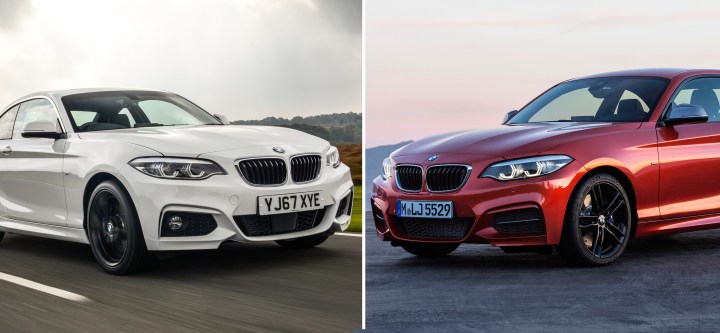
Turbodiesel or turbo petrol? That’s the conundrum facing many South African car buyers. Diesel has had a bad rep of late, but turbodiesels promise low consumption and lusty torque. Turbo petrols should be smoother and more refined. So how do you choose?
BMW’s 2-Series is the Bavarian marque’s smallest coupé – although, confusingly, the notchback profile of the compact two-door is more sedan than sleek fastback.
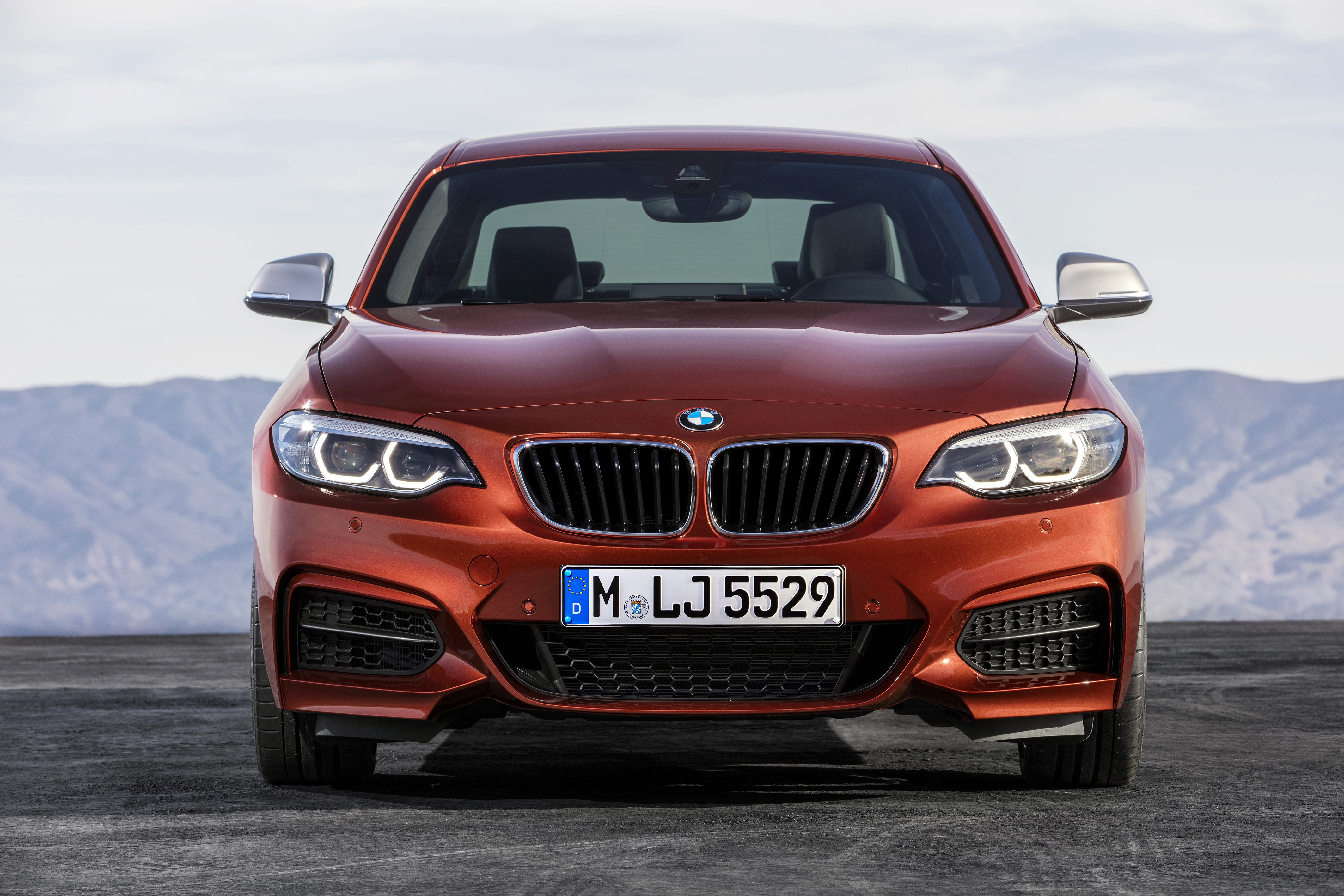
The Two is also among BMW’s more affordable offerings (if you can call pricing starting in the mid R500k-range affordable). In money terms, only the 1-Series hatchback is more accessible.
If the chunky 1-Series is the more pragmatic, more practical five-door hatchback, then the 2-Series is the more flamboyant, more glamorous two-door, with more than a passing touch of sporting brush.
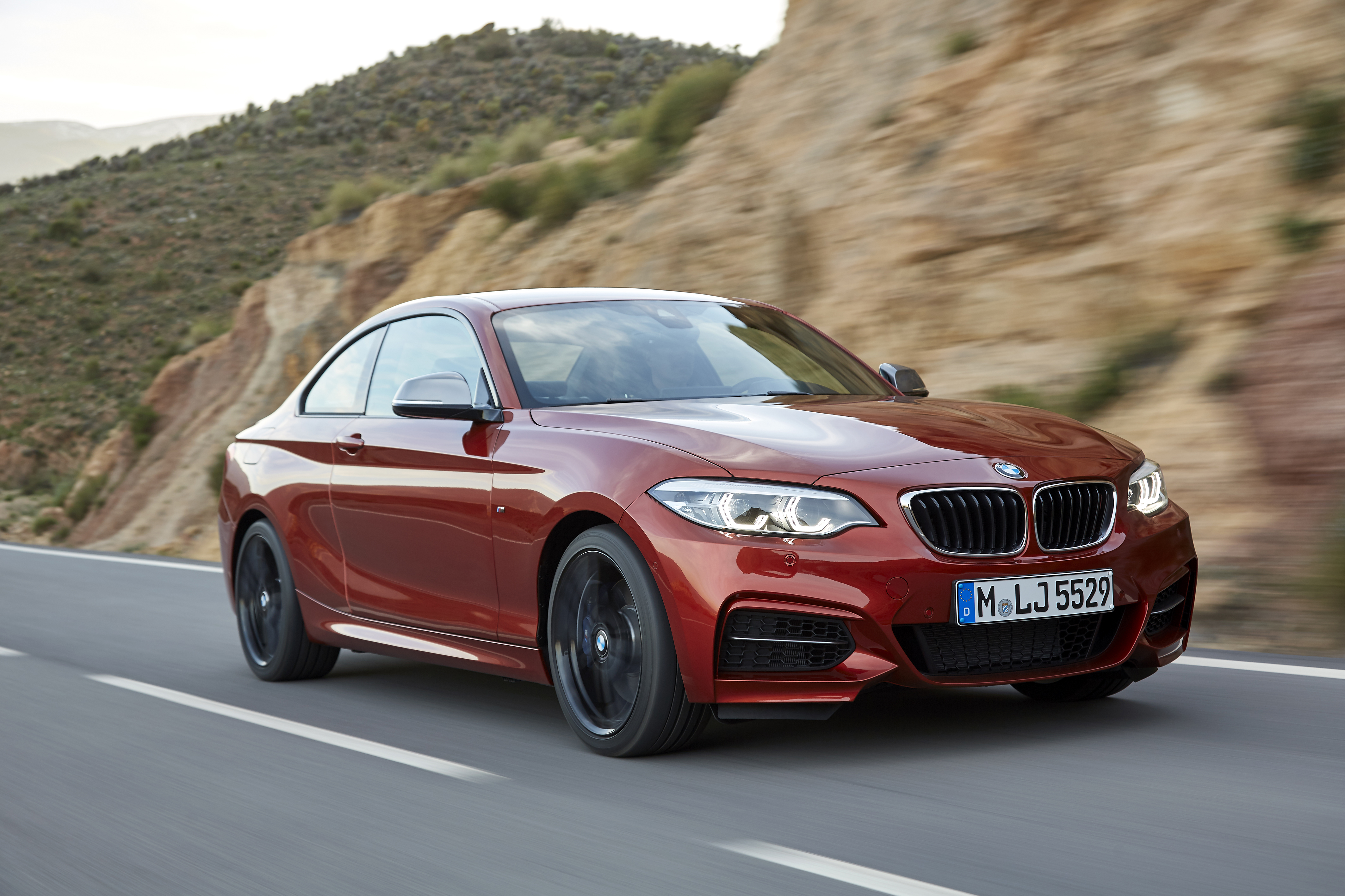
The extended bonnet, curved roofline, crisply accentuated waistline, sculpted flanks and pert rear deck conspire to create a shape that’s both wind-cheating and mildly aggressive – especially when the optional M Sport package is added to the basic shape.
The 2-Series recently underwent some midlife improvements in an attempt to add some renewed visual zest – and retain buyer interest. Arguably most noticeable are the new bi-LED headlights with hexagonal daytime running lights.
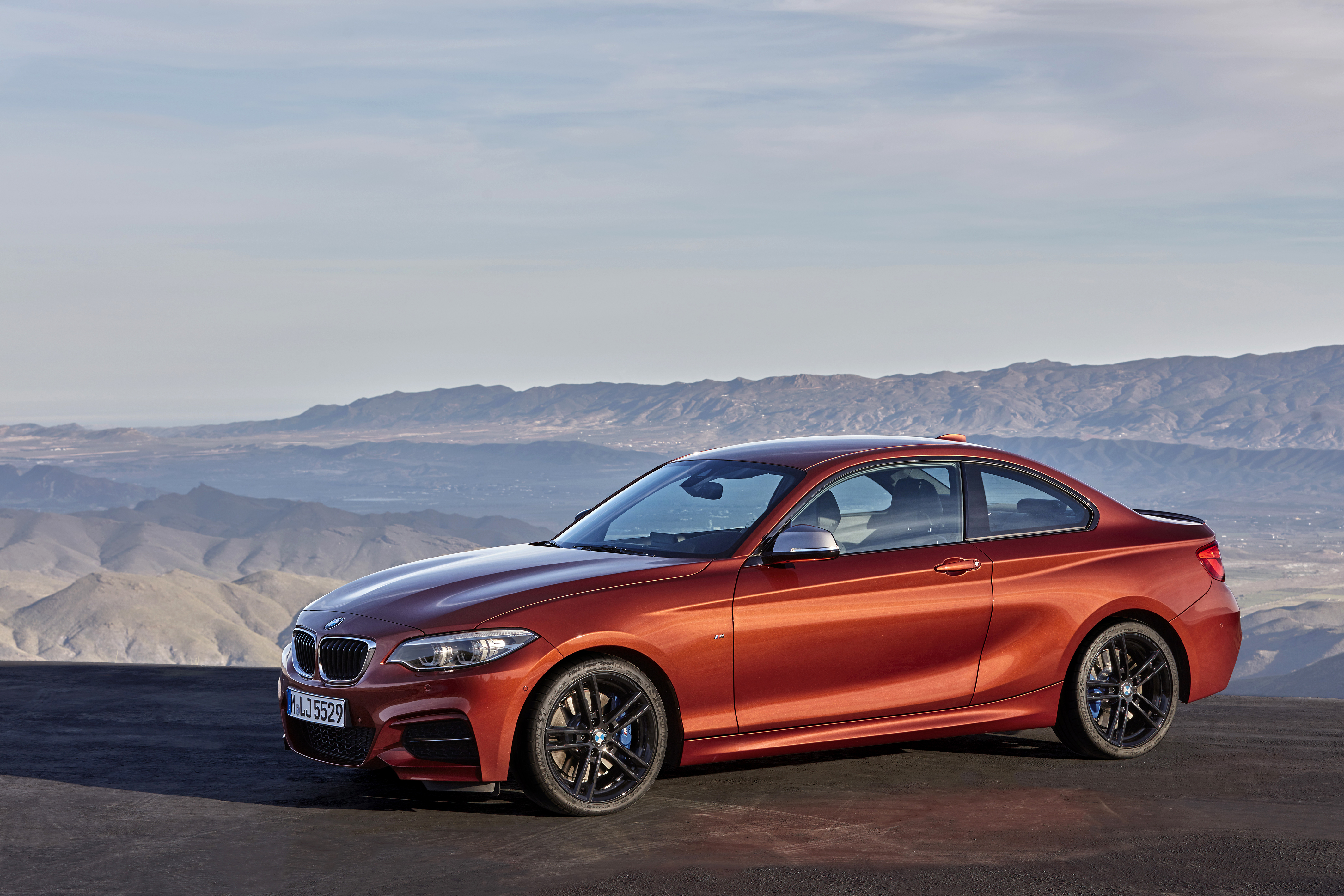
The larger, wider kidney grilles also contribute to a bolder look, further underscored by the hungrier air intakes. Not quite as obvious are the new L-shaped single-piece tail lights. Buyers also get to choose from a new array of wheels.
The optional black 18-inch alloys fitted to both of our test examples are apparently a favourite, added-cost replacement for the standard (and rather diminutive) 16-inch versions.
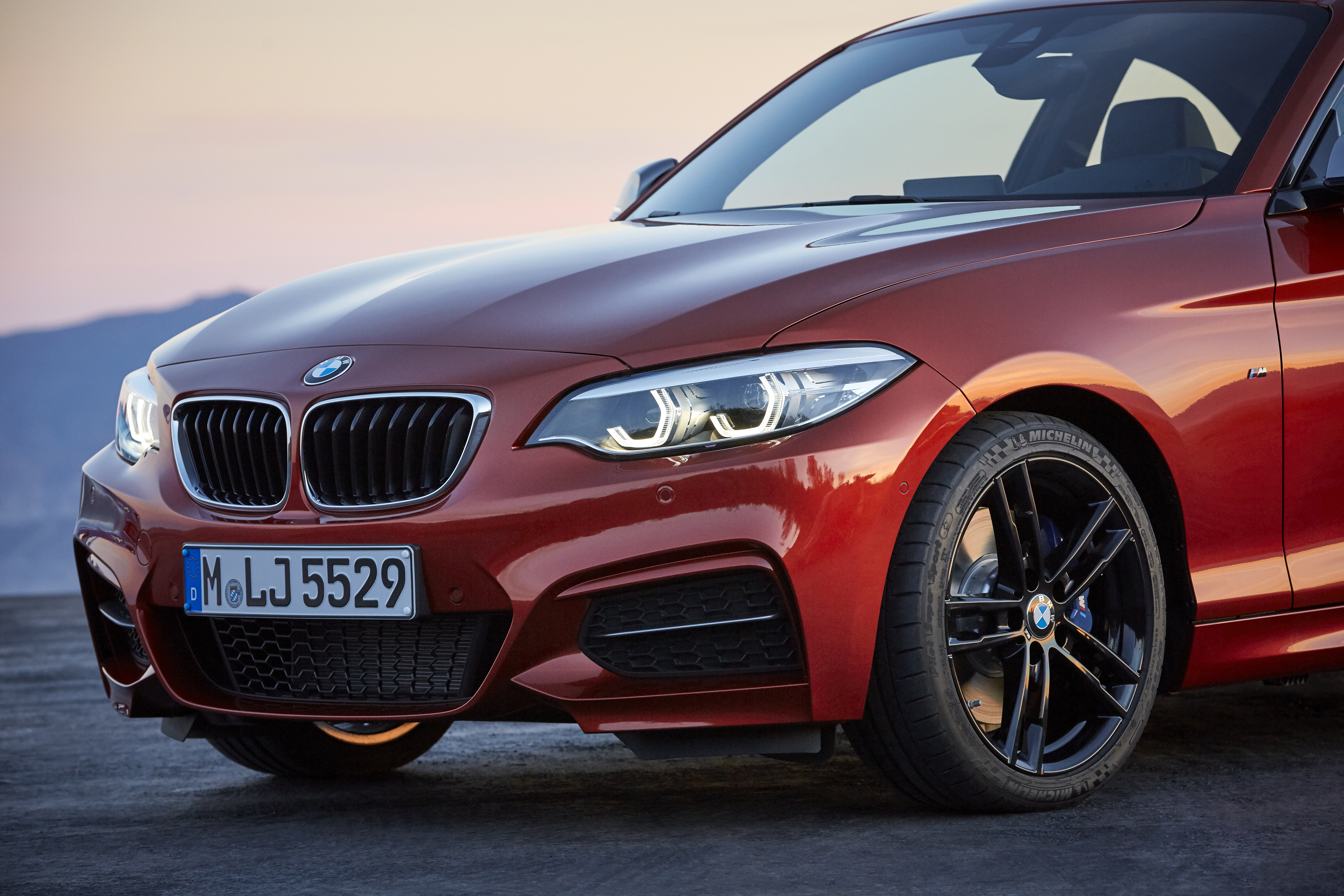
If, like me, you acknowledge that the cockpit of a car is more important than its appearance, because that’s where you’ll be spending most of your time in its company, then the interior updates are perhaps more pertinent.
All 2-Series models get an all-new instrument panel, with a closer focus on tactile quality and upmarket finishes such as gloss-black centre stack panels, contrasting stitching and chrome accents.
The colour screen mounted above the centre stack has become touchscreen-capable in units fitted with optional navigation, providing an alternative way to operate the infotainment system, although in my books, the conventional BMW iDrive system still works better from the driving seat.
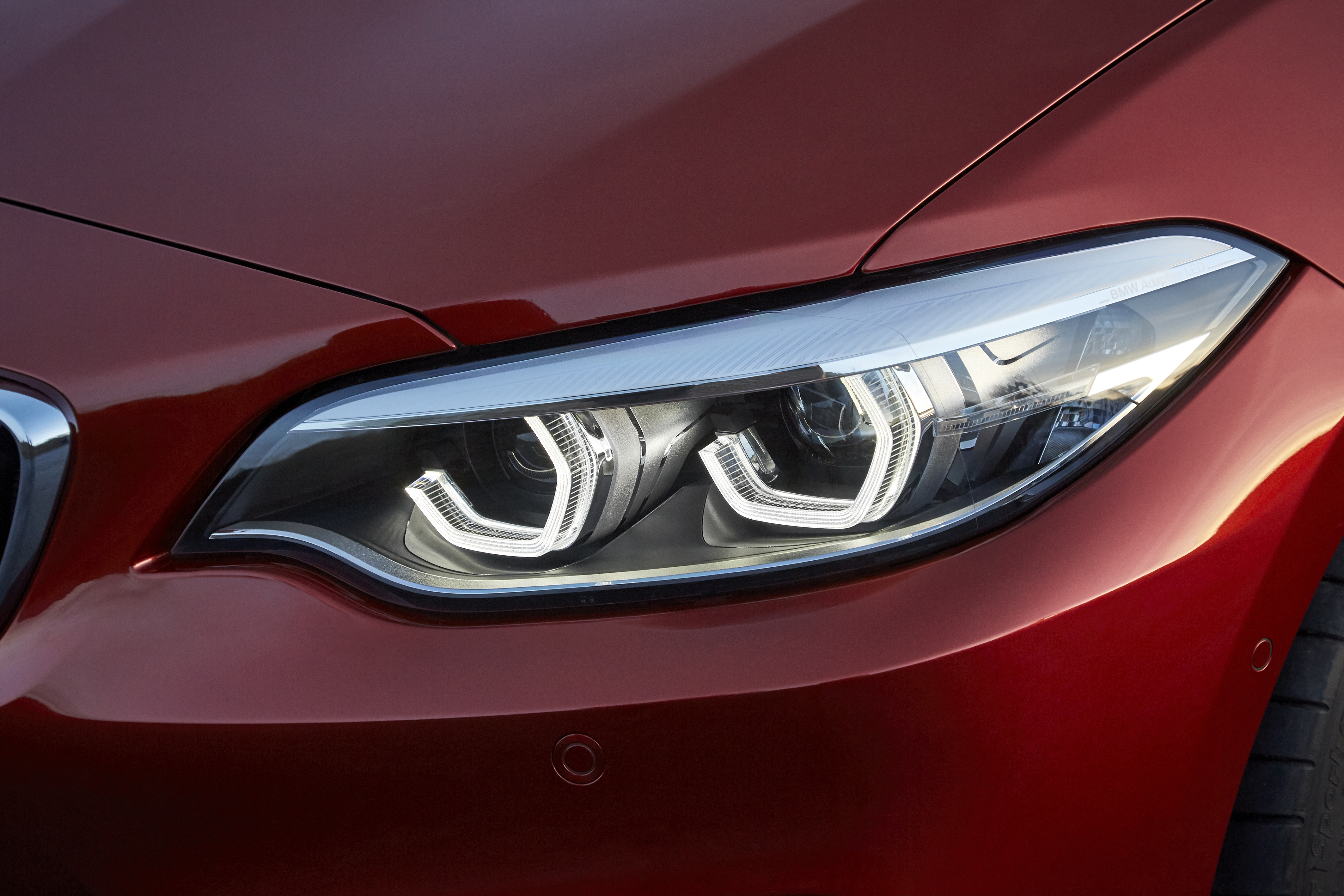
There’s also improved connectivity, including optional Apple CarPlay compatibility that partners well with the car’s systems in practice, and includes Siri voice control.
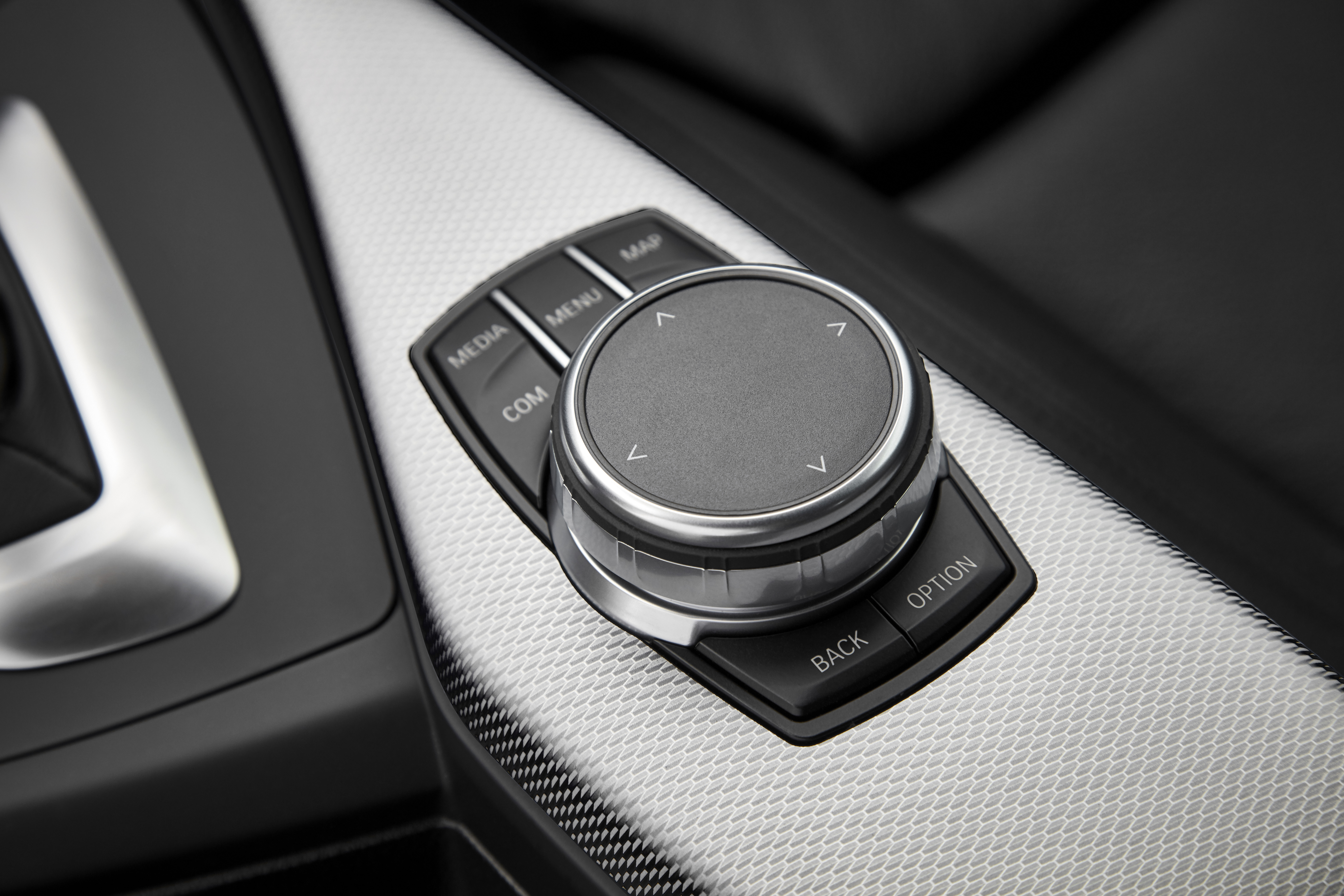
And that, my friends, is the full scope of the Two’s midlife facelift. The rest remains familiar: big doors that allow good access to front seats, but can’t change the fact that access to the rear bench remains compromised, while the actual seating is still cramped for adults.
Which brings us to the question many 2-Series will be faced with: do I opt for a turbo petrol or the turbodiesel? The 220i is the most affordable Two, while just less than R40k more will buy you the 220d.
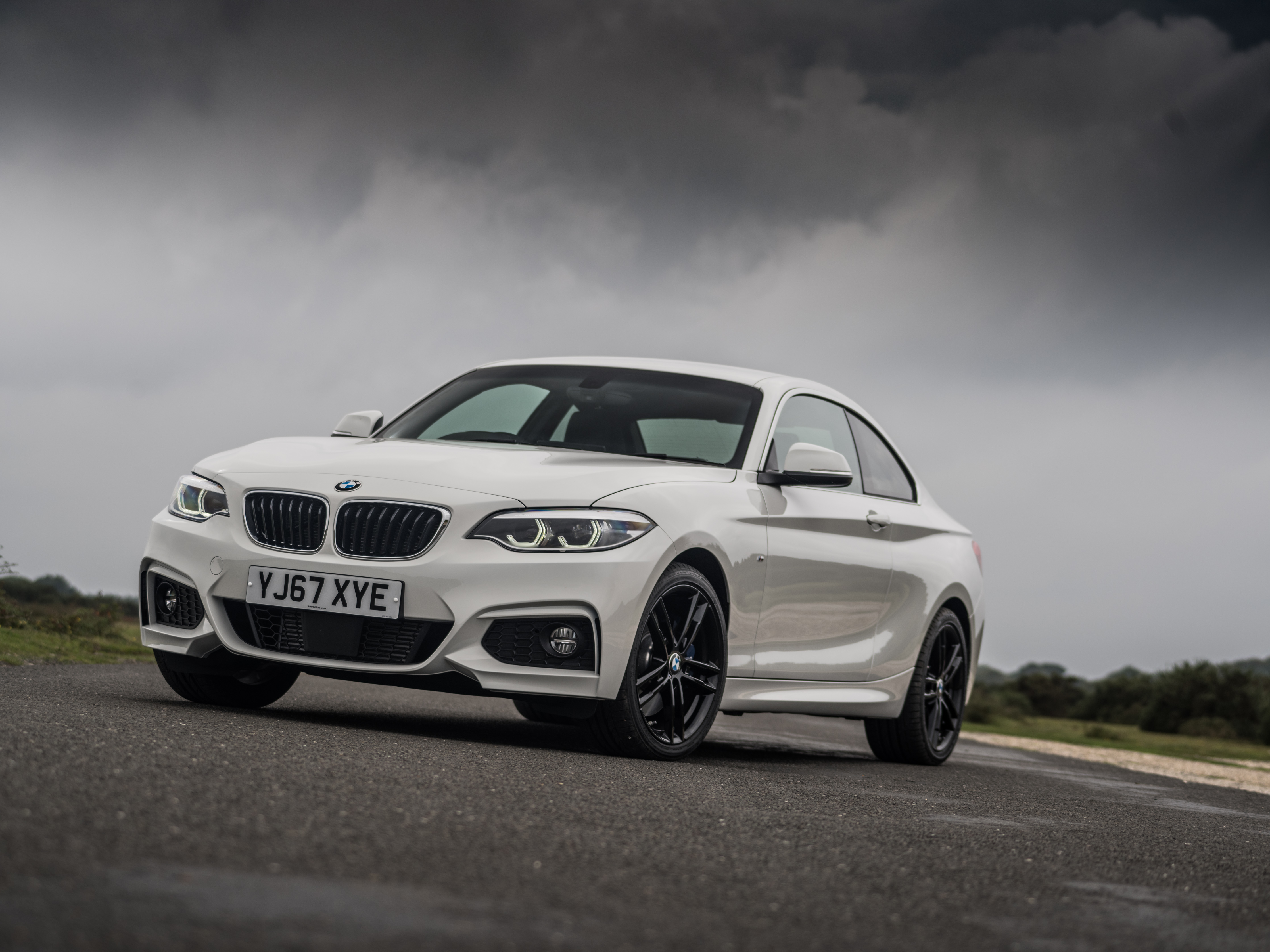
I’ve gathered two otherwise identical examples – a 220i and a 220d – to find out which makes the stronger motoring case. A glance at the vital stats will show that these are M Sport versions, which come at a premium, and the test cars are loaded with extras, too.
But for comparative purposes, the chassis and suspension, as well as the wheels and tyres, are identical. So, dynamically, they’re good to square up.
Not surprisingly then, both Twos express a sporty demeanour. That sport suspension, which also lower the car, as well as the lower-profile rubber on bigger wheels, emphasises just how well the 2-Series handles.
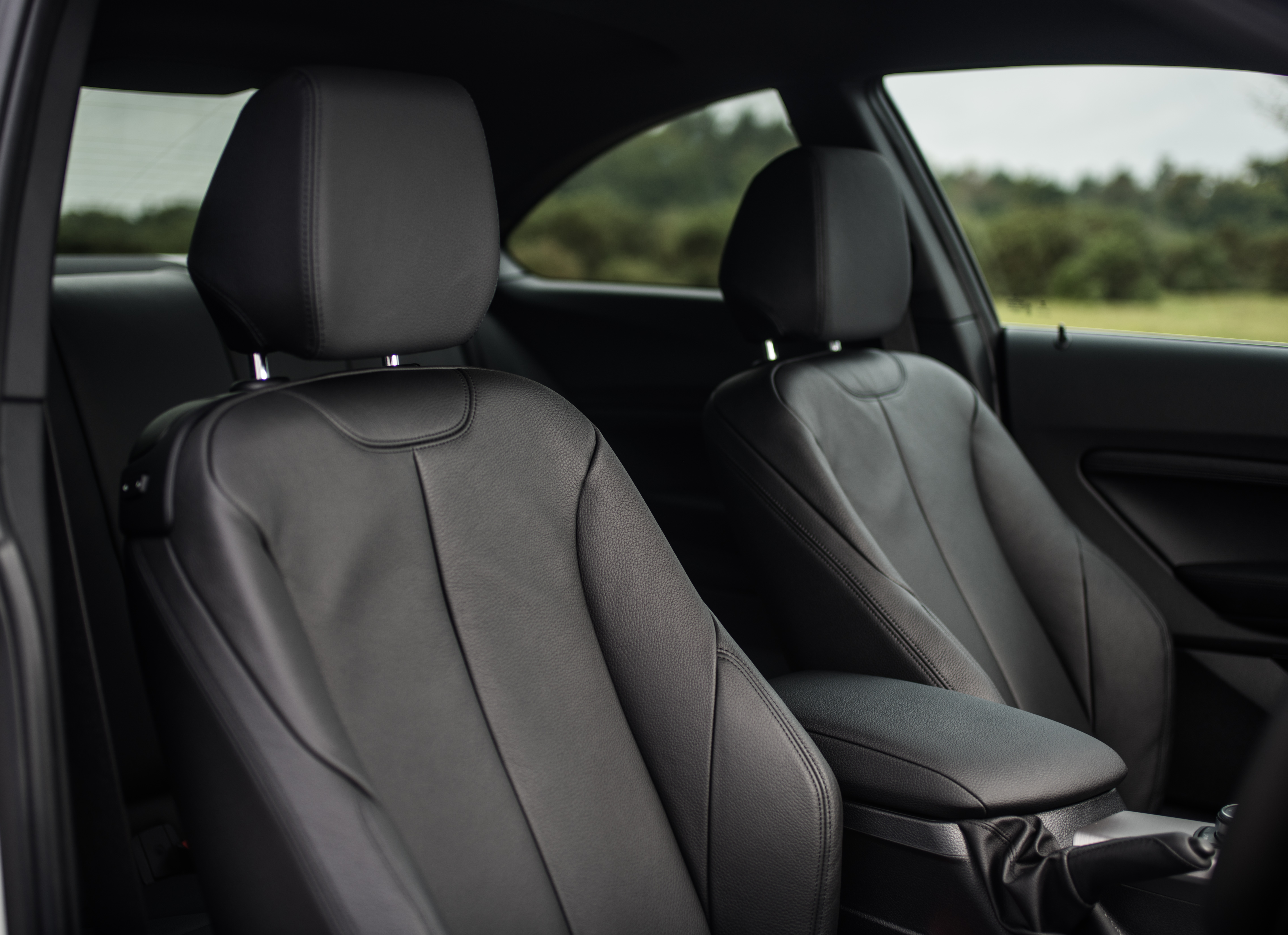
The steering has beautiful heft and feedback, underlining the driver appeal of the car. Despite the electric assistance, it always remains communicative, providing unequivocal feedback on the coupé’s reactions to throttle, brake and steering input.
In the Two – petrol or diesel – you always know exactly what the car is up to. Part of the reason is the rear-wheel drive configuration, which allows the steering to get on with what it does best, while power transfer remains the responsibility of the rear axle.
Factor in the nicely balanced weight distribution, and these Beemers find a satisfying compromise between lively responses and planted composure.

But that’s where the similarities end. In these two cars, the engines are responsible for vastly different personalities.
The 220i’s two-litre turbo petrol isn’t as free-revving as a normally aspirated mill would be, but it’s not nearly as gruff and meaty as its turbodiesel rival either. Plus, the twin-scroll turbo comes on song really early, delivering plenty of urge from the word go.
Add the nicely stacked ratios of the quick-shifting auto gearbox, and it’s easy to extract the full potential of the power unit – and fun, too. Progress is swift, if not hot-hatch rapid, and if you opt to use the shift paddles, there’s all the engagement of manual cog swaps, too.
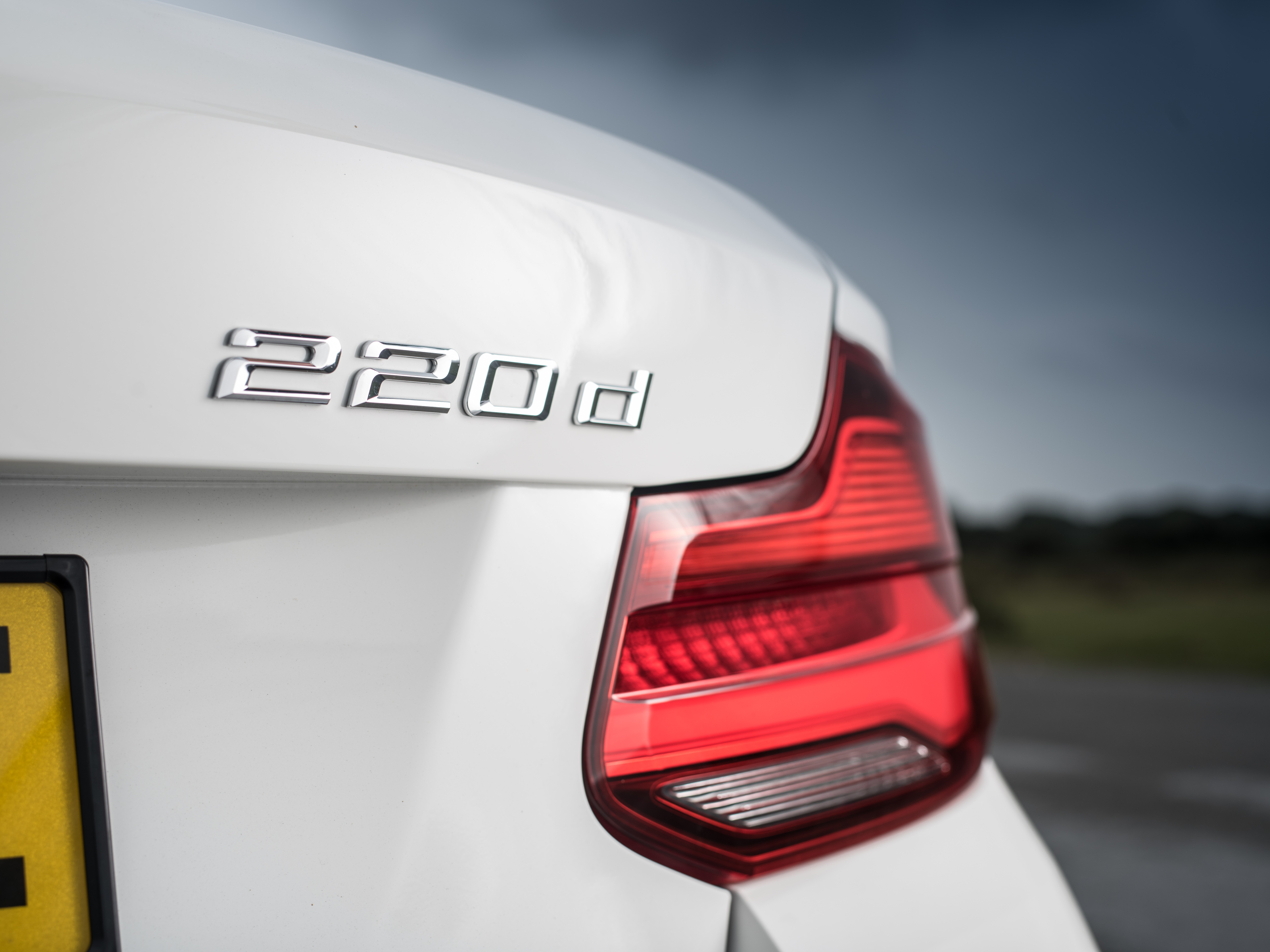
Stick to the Comfort driving mode if you’re cruising or commuting, but to experience the heart and soul of the 220i, you need to swap to Sport mode, which adds just the right level of extra crispness to the throttle, a bit more weight to the steering, and delivers even quicker gear changes.
There’s little need to chase the rev counter needle into the red, but using the full power band and more is part of the 220i’s charm, when you’re on a quiet stretch of tar, with some curves and corners to explore.
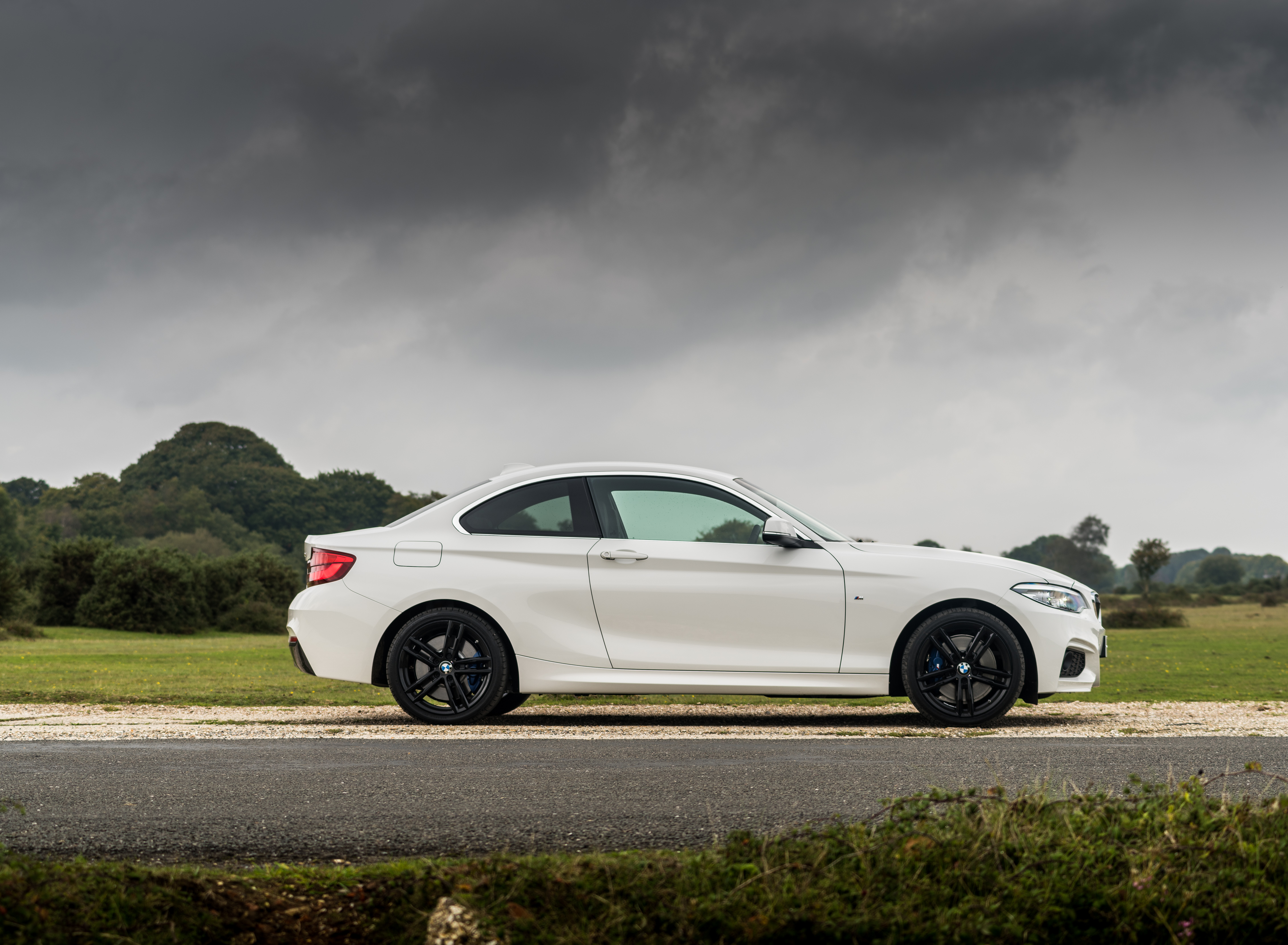
By the same token, switch back to Comfort, engage the cruise control, and the 220i will propel you from A to B with the effortless ease and comfort of something a lot bigger. Only tauter ride gives the game away.
Sounds pretty tempting, doesn’t it? In fact, why would anyone opt for the turbodiesel-motivated 220d, then?
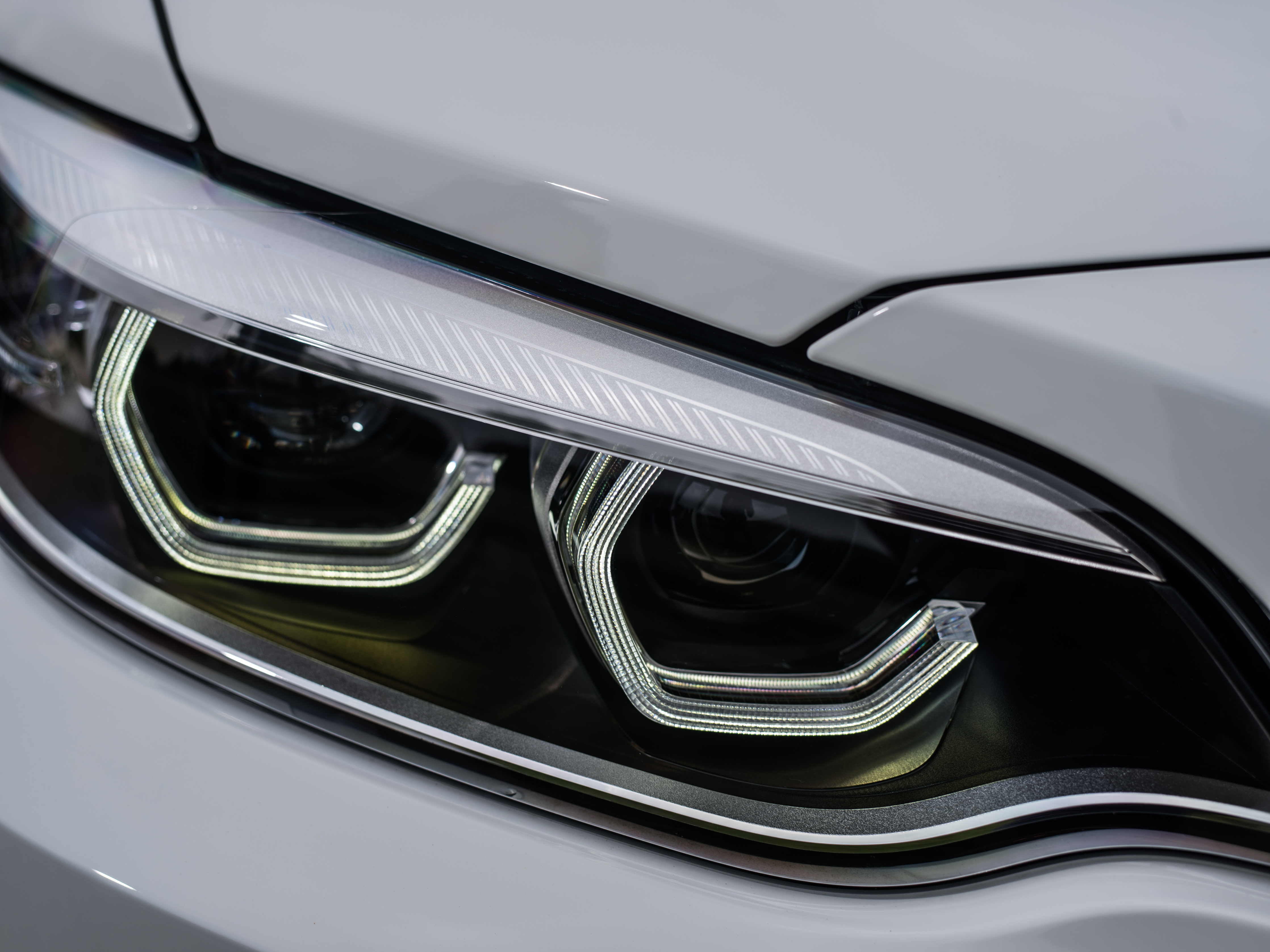
Good question. It’s true that the lower, stiffer suspension and quick-shift gearbox, as well as the 18-inch wheels, create a sporty demeanour that is a little at odds with the turbodiesel drivetrain.
That said, there’s no shortage of low-down shove, and plenty of power, even if most of it is concentrated below 4,000rpm, making short-shifting almost obligatory.
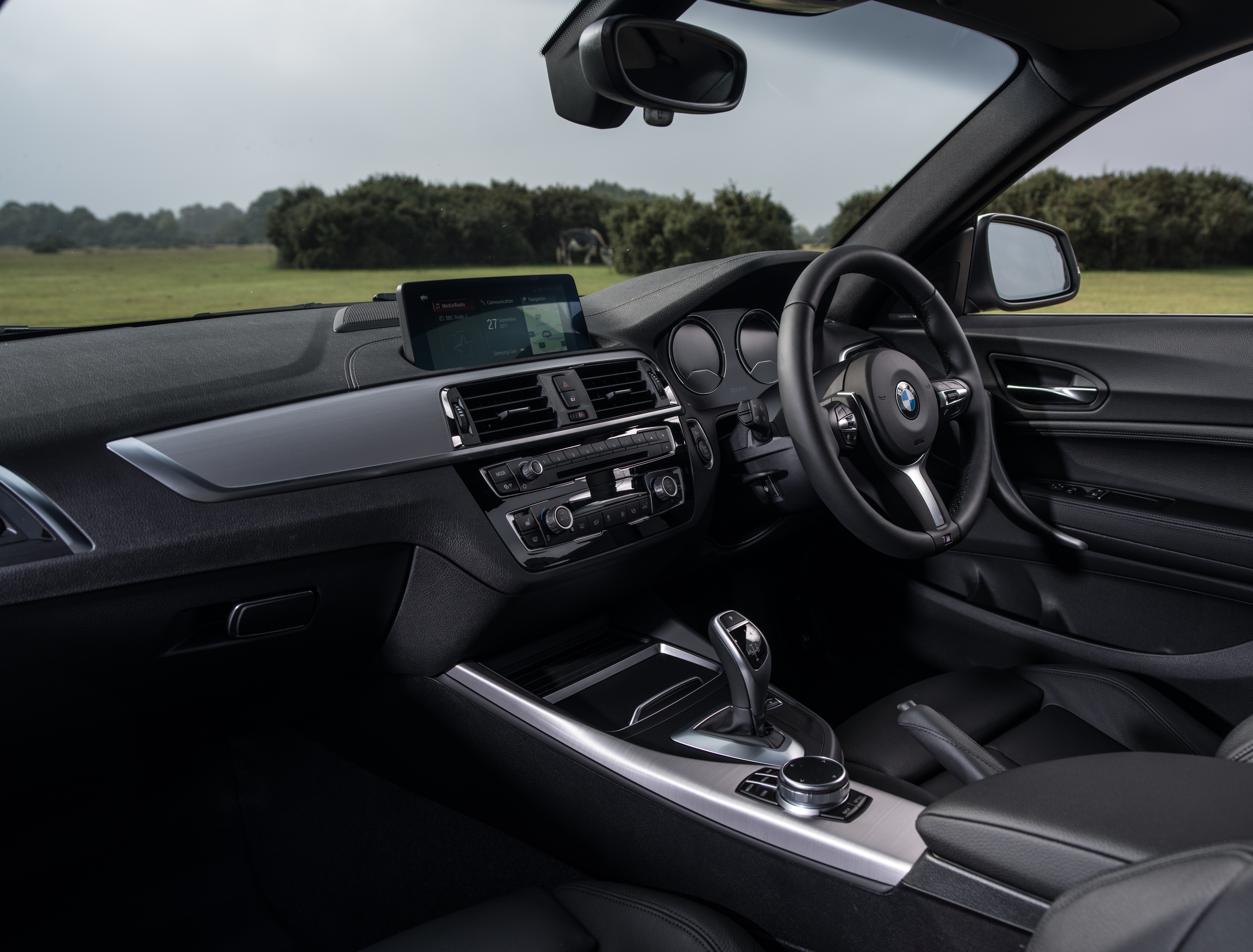
Here too, performance is rapid enough fro most tastes, but the 220d is more about effortless open road cruising and an almost brutal midrange punch that makes taking advantage of gaps in traffic almost comically easy.
Given the full force of 400 Nm coming on song well below 2,000rpm, the rear-wheel drive configuration is a good thing, ensuring plenty of traction and never getting in the way of that delightfully tactile steering.
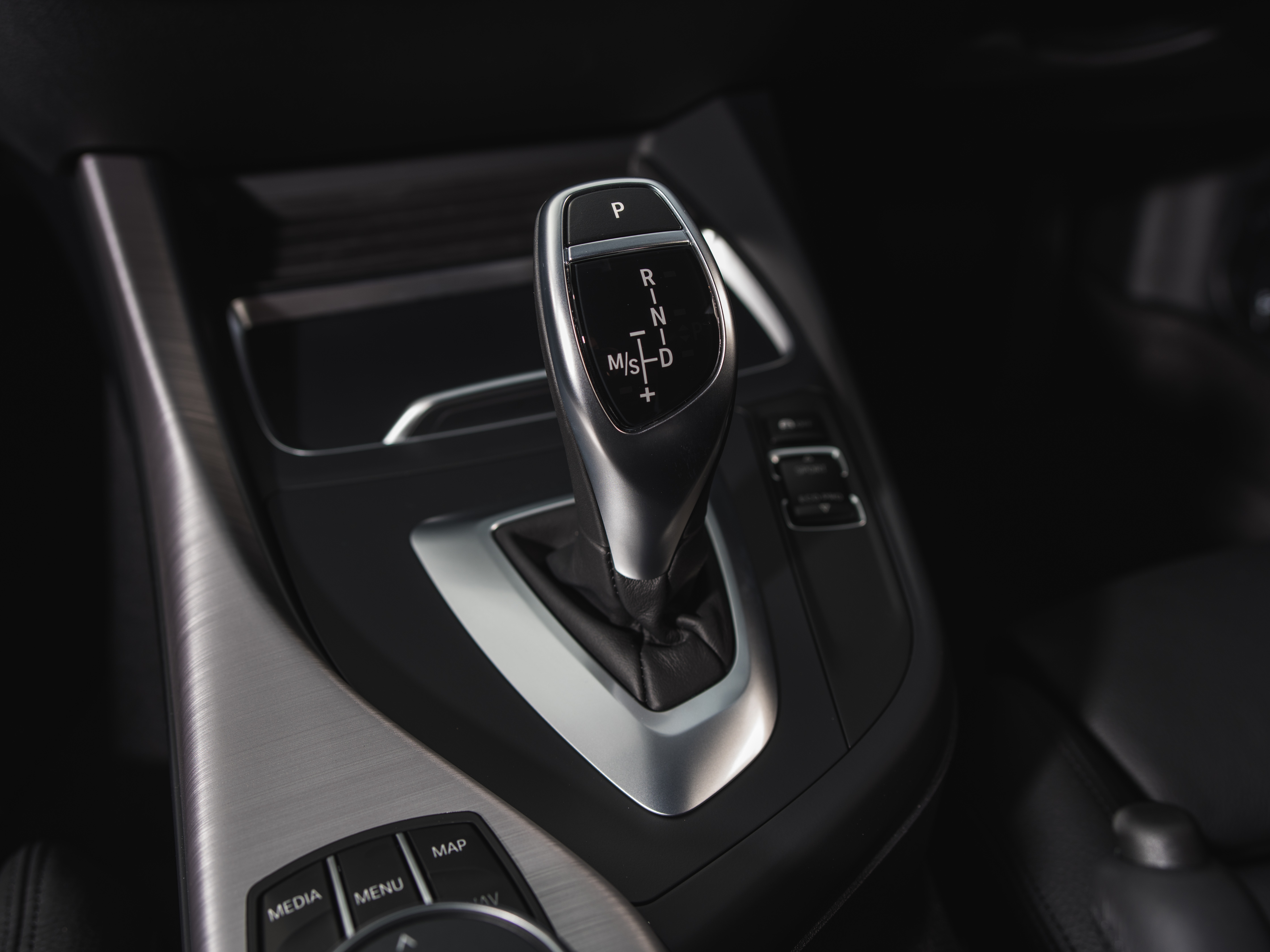
On the move, the 220d exudes a reassuring sense of balance. Progress is always effortless, and the sport-shift Steptronic gearbox works a treat, both in auto mode and when using the shift paddles. Unlike the 220i, however, it’s best to let the gearbox do its own thing most o fthe time, without driver intervention.
The engine will rev beyond 4,000rpm but there seems little point, especially since the chunky four-cylinder never feels truly smooth, with an aural gruffness that doesn’t always suit the Two’s sleek and sporty disposition.
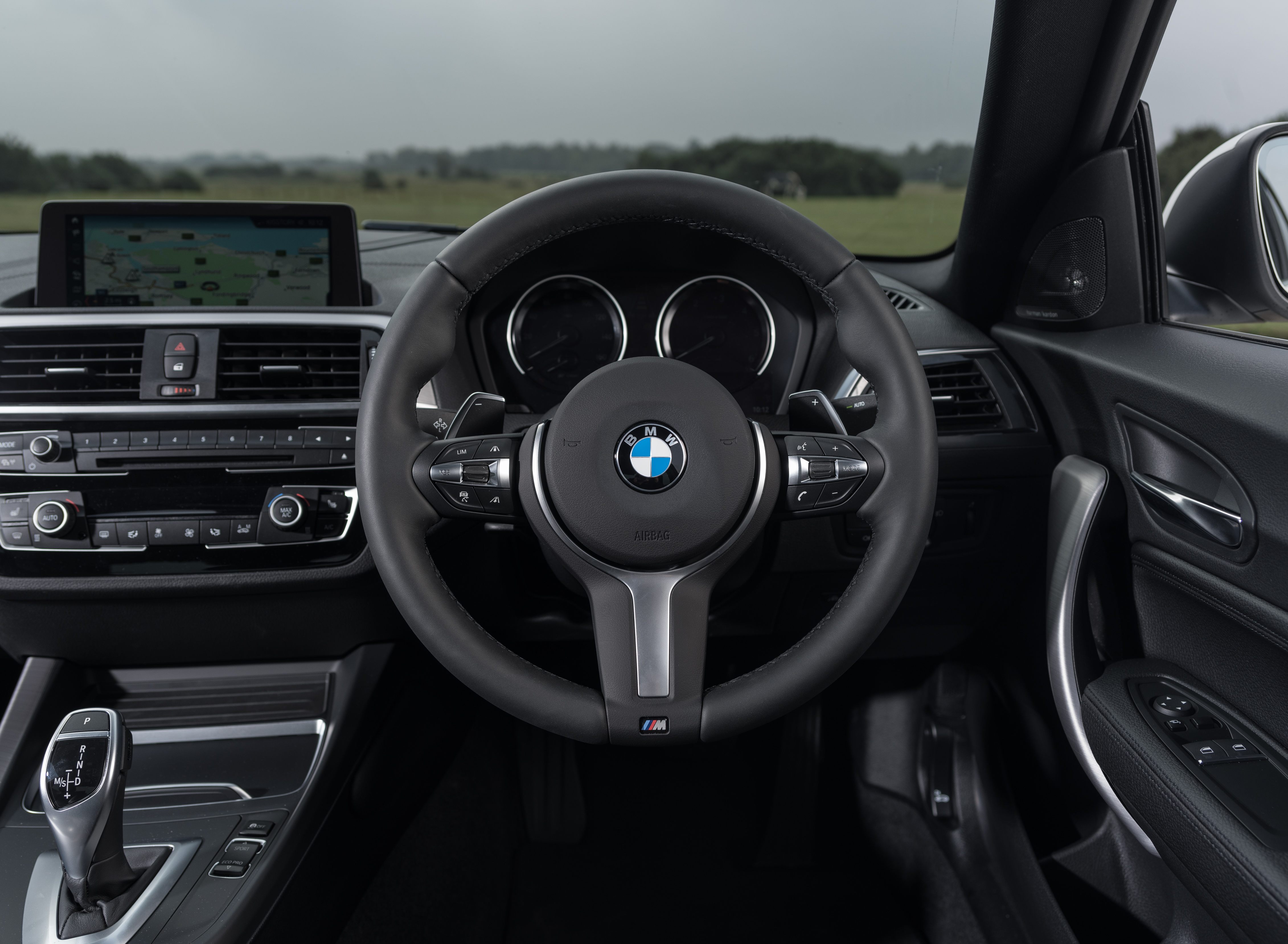
Comfort is the best all-round setting, but for those who want to exploit the sporty chassis, Sport adds an extra grin factor. As in the case of the 220i, it dials in much crisper throttle response, slightly meatier steering and even faster gear changes.
The drivetrain response feels more cohesive, and the overall package more convincing – if you like your motoring racy. Sport Plus, which relaxes the limits before the stability control system intervenes seems an unnecessary option, unless you’re on a track – which is unlikely in this case.
Both models also offer an Eco Pro setting which works well enough in city traffic – and better so in the 220d than the 220i. It limits revs, encouraging early gear changes, regenerates energy under braking and trailing throttle, and even offers a dedicated efficiency display.
So, which is it to be? Does the 220d warrant its almost 40k premium, before extras? It does have a lot more torque, a better power-to-weight ration and potentially lower average fuel consumption on its side.
The 220i, however, has the smoother drivetrain, with an engine happier to pile up the revs. While the 220d feels at its best in a long-distance cruising role, the 220i is more enjoyable in the cut-and-thrust of twisty country road.
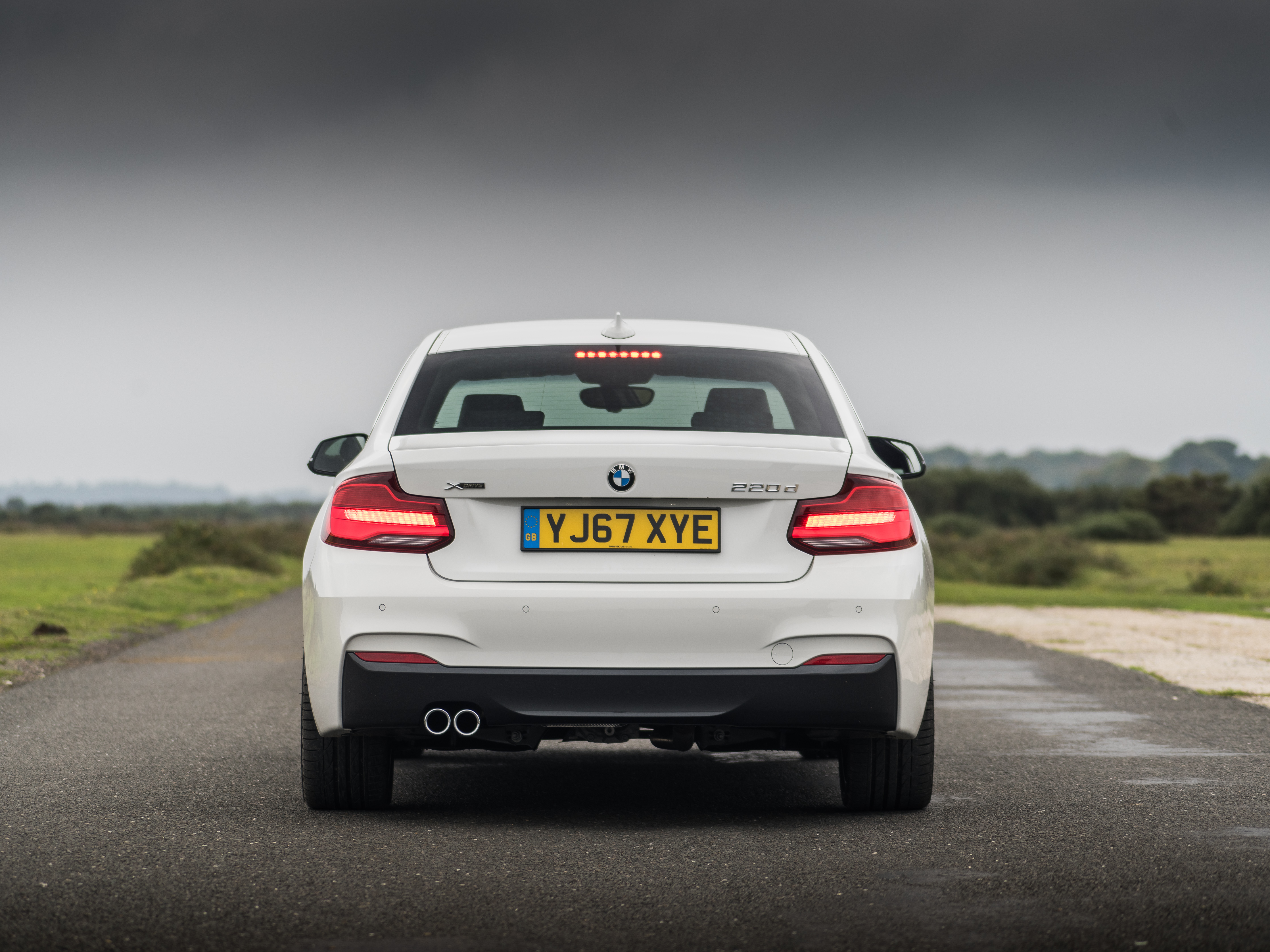
Drivetrain and chassis seem better matched, with the petrol engine’s character a better match for the M Sport underpinnings. And while the 220d is best left to change gears automatically, the 220i benefits from the driver’s intervention, and rewards with a more engaging motoring experience.
It all boils down to owner preference – the effortlessness and economy of the 220d, versus the driving appeal of the 220i. I know which one I’d choose … DM
VITAL STATS
| BMW 220i Coupé M-Sport | BMW 220d Coupé M-Sport | |
| Engine | In-line four-cylinder, 1,998cc, turbo petrol | In-line four-cylinder, 1,995cc, turbodiesel |
| Power | 135kW @ 5,000rpm | 140kW @ 4,000rpm |
| Torque | 270Nm @ 1,350 – 4,600rpm | 400Nm @ 1 750 – 2,500rpm |
| Power-to-weight ratio | 91.22 kW/ton | 98.94 kW/ton |
| Gearbox | Eight-speed Steptronic auto, RWD | Eight-speed Steptronic auto, RWD |
| Wheels/tyres | 18-inch alloy, 225/40 (f) 245/35 (r) R18 tyres | 18-inch alloy, 225/40 (f) 245/35 (r) R18 tyres |
| 0-100 km/h | 7.2sec | 7.0sec |
| Top speed | 230km/h | 230km/h |
| Fuel tank capacity | 52 litres | 52 litres |
| Fuel consumption (claimed) | 5.5 litres/100km | 4.3 litres/100km |
| Operating range (claimed) | 945km | 1,210km |
| CO2 emissions | 126 g/km | 104 g/km |
| Retail price / as tested | R557,559 / R664,184 | R599,800 / R704,750 |



















 Become an Insider
Become an Insider